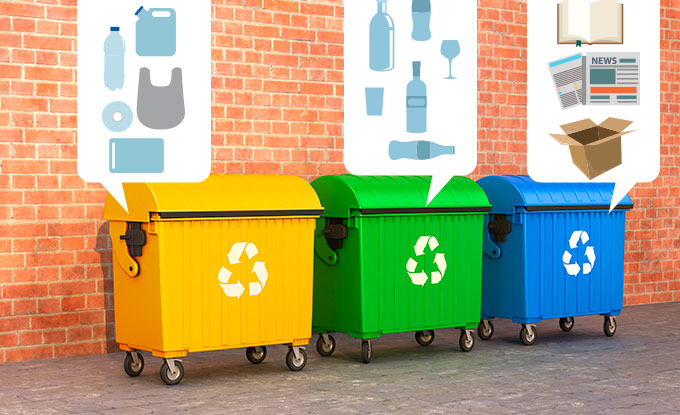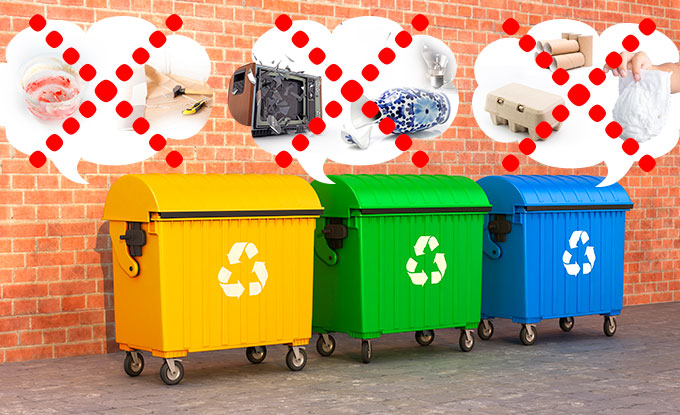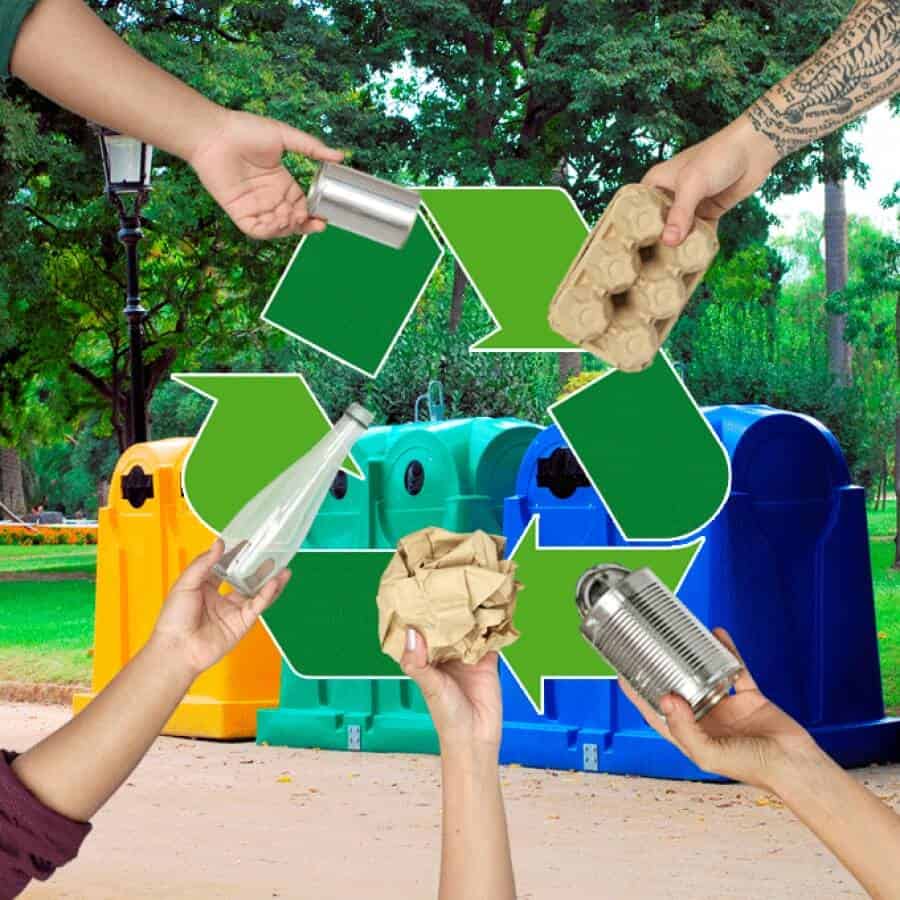The problem of an excess of packaging material is worldwide. The need to wrap goods has grown to such an extent that sometimes it is difficult to get items unwrapped, not to mention the dilemma of which recycling container the packaging belongs in.
The usual set of recycling bins consists of a trio: yellow (plastic), blue (paper), and white or green (transparent or coloured glass) containers.
With that comes an additional set of bins marked: red (electronics), brown (bio), and orange (beverage cartons).

Examples of what belongs in…
Yellow bins:
– PET bottles
– Plastic bags
– Plastic cups (yoghurt, etc.)
– Plastic containers (cleaning or cosmetic products)
– Plastic bowls and buckets
– Toys made from plastic
– Polystyrene
What doesn’t belong here
– Containers for oil products
– Unclean plastics
– Linoleum
Blue bins:
– Newspapers and magazines
– Office paper
– Boxes
– Cardboard
– Paper packaging
– Notebooks
– Leaflets
What doesn’t belong here
– Wax paper
– Dirty paper with traces of food
– Used hygiene products (nappies, tissues, bandages)
– Also paper egg trays and the cardboard tubes for toilet paper or kitchen paper towels don’t belong in recycling but in usual mixed waste
White or green bins:
Sometimes there is only one type of container for glass (usually green) and meant to put transparent and coloured glass together
– All kinds of clean glasses and jars without lids
– Window glass
What doesn’t belong here
– Mirrors
– Bulbs
– Ceramic and porcelain
– Car glass
– TV screens

Tetra Pak cartons are made from a combination of paper and polyethylene, some types also with an extra aluminium layer. These primarily belong in an orange bin.
Some localities, though, allow and mark them for either yellow or blue bins for further separation.
The evolution of packaging dates back to 1860, when the first celulose plastic was invented.
What would the situation have looked like before this date?
Before there was plastic as a packaging medium, there was always paper or even the leaves of certain plants, such as banana leaves.
There also was a vast range of containers from different materials (glass, porcelain, metal, or ceramic) which were not intended to be thrown away after first use.
People were more self–suficient – food was mostly cooked at home, many hygiene products were also home made, using fabrics. Last but not least, people were more careful with their things to protect them from destruction.
Photos: Shutterstock / Graphic design: Martina Advaney
Support us!
All your donations will be used to pay the magazine’s journalists and to support the ongoing costs of maintaining the site.
Share this post
Interested in co-operating with us?
We are open to co-operation from writers and businesses alike. You can reach us on our email at [email protected]/[email protected] and we will get back to you as quick as we can.









